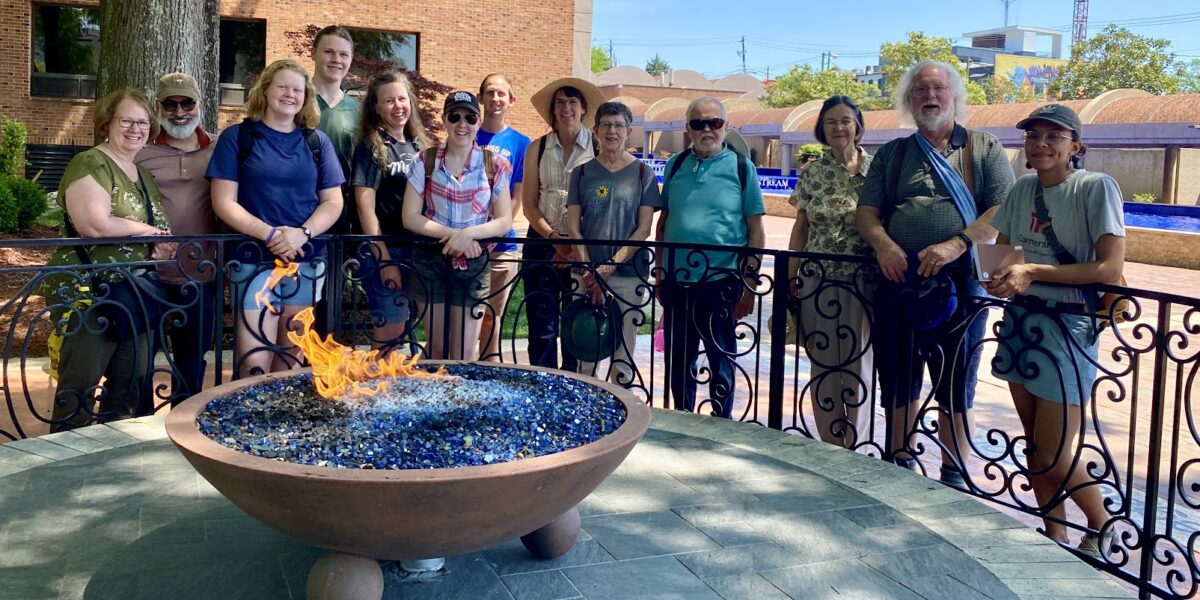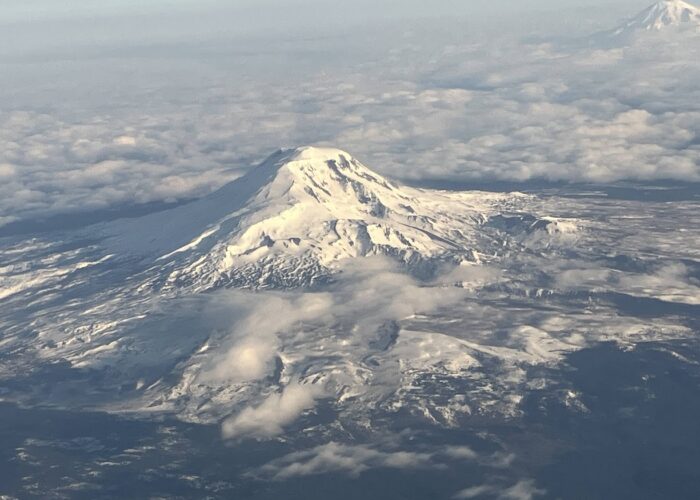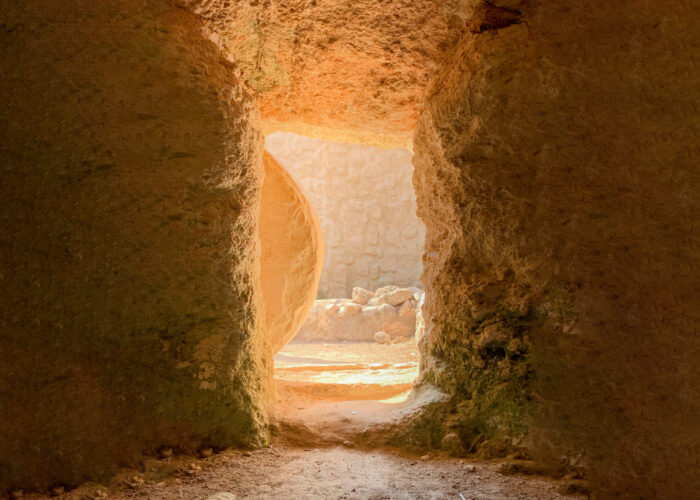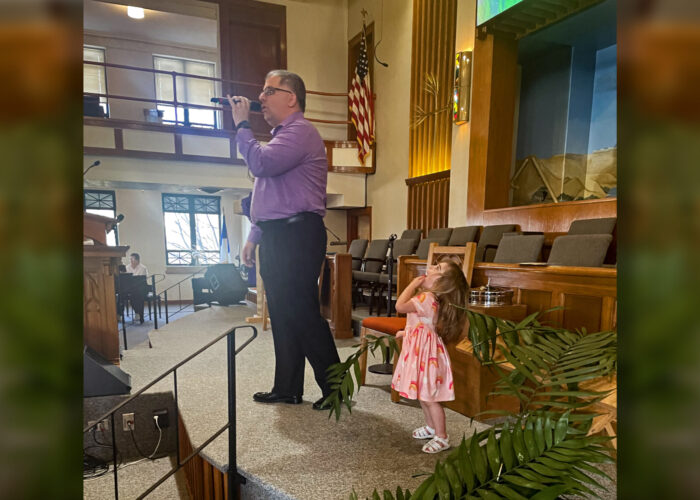Jennifer Murch participated in the Just Peace Pilgrimage Civil Rights Learning Tour in April 2023. Her thoughts are broken down into six blogs, spanning all six days of the tour.
Last fall when our church arranged a civil rights learning tour through Mennonite Mission Network, our family talked about going — just the four of us living at home — but my older daughter who was living in Massachusetts at the time said she wanted to come, too, so we decided to wait until spring when a second trip was scheduled. Then, with the departure date fast approaching, my husband and I realized it was too complicated for both of us to go, so he decided to stay home to milk the cows and earn money (so I could spend it). And then, since there was a vacant space, my daughter-in-law decided to come along, too. 
So there we were: most of my family, five other people from our church, and three people from MMN headquarters: a driver, the leader, and another MMN employee who was along for the ride (and the learning).
Day One
The first night we had supper at Casa Alterna, a home where asylum seekers and US citizens live together. Two of the residents, a young couple who met and married on their way to the US, prepared our dinner of baleadas and rosa de jamaica tea, and then told us a bit about their story. (The young woman was from Honduras, close to the place where fish fall from the sky — seriously. It’s a thing!)
Day Two
At the Friends Meeting House that serves as a worship space, short-term sanctuary for immigrants, and preschool, Anton, the friend in residence, pulled out a pin-filled world map showing where the people they serve come from.
He took us on a tour of the building and showed us where the immigrants sleep, and the room full of second-hand clothing for them to choose from, and he filled us in on some of the history of Atlanta, including the ways in which gentrification has impacted the city — at which point my younger son asked what gentrification was. I’ve always been unclear about gentrification, and I’m still fuzzy about the practicalities of it, but Anton’s comprehensive explanation, combined with all the driving tours and history lectures (both in Atlanta and in the other places we visited), painted a much fuller, more nuanced picture.
Here is a video of Anton talking about the work they do, if you’d like to know more:
In downtown Atlanta, we walked by ICE headquarters where a long line of asylum seekers waited outside. "Rain or shine, there is always a crowd here," Anton said. He kept breaking away from us to introduce himself to the people, shaking hands, asking their names, jotting down phone numbers for them to contact. It’s very hard to get asylum in Georgia, he explained. Only 10 percent of all requests in Georgia are ever granted. Other states, like Maryland and New Jersey, are much more open to immigrants.
Outside the state capitol, he explained how Georgia law requires a social security number in order to get a driver’s license, and walked us through what happens if an unlicensed person is caught driving — crippling fines, jail time, and, on the third offense, a felony charge — as well the risks and challenges of attempting to get basic medical care without a license.
And outside the unmarked Freedom University headquarters for undocumented students, we read the words of DACA artist Yehimi Cambrón in her mural called The Dreams We Carry.
(The university has got some pretty cool merch, wink-wink, and you can see Junot Dias, board member for the university being interviewed on the Colbert show here.)
At the Ebenezer Baptist Church, we took a few minutes to sit in the pews and listen to the recordings of Reverand Martin Luther King’s speeches that were playing over the sound system.
Being in that church was like stepping back in time.
The space felt familiar, thanks to the photos and footage I’ve seen, and I could almost feel the energy of all those people who’d been there before me, yet it was so quiet, almost other-worldly.
I got that same melancholy ache more than once during the trip: Driving through abandoned Black middle-class neighborhoods and commercial districts. Standing at the spot where the Freedom buses unloaded. Facing a water fountain in the middle of a court square where slave and cattle auctions had once been held. The weight of all those people, all that history, so heavy it was almost palpable. 
We visited the Martin Luther King Jr. memorial then, and Anton got yelled at by a guard for (unknowingly) entering a taped-off area and looking under a tarp-wrapped thingy that was under construction.
Apparently, he got yelled at when they’d visited during the fall trip, too, but that time it was for baptizing people with water from the MLK reflecting pool. "But there’s no sign that says you can’t baptize people," he pointed out, eyes twinkling.
This Civil Rights Learning Tour is part of Mission Network’s new program, Just Peace Pilgrimages. Start your journey today by visiting MennoniteMission.net/JustPeace.





